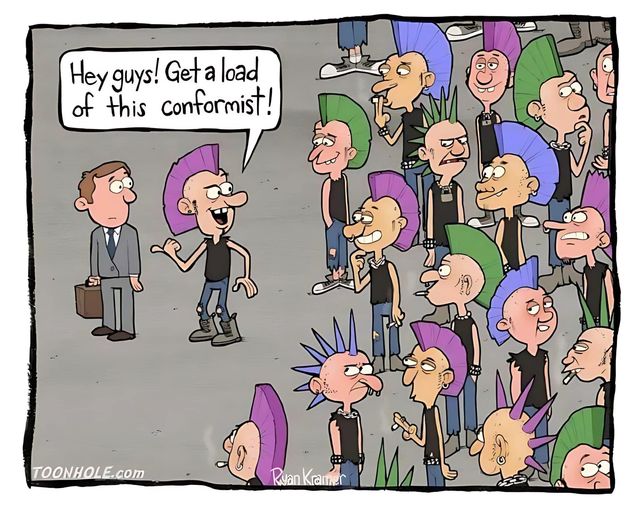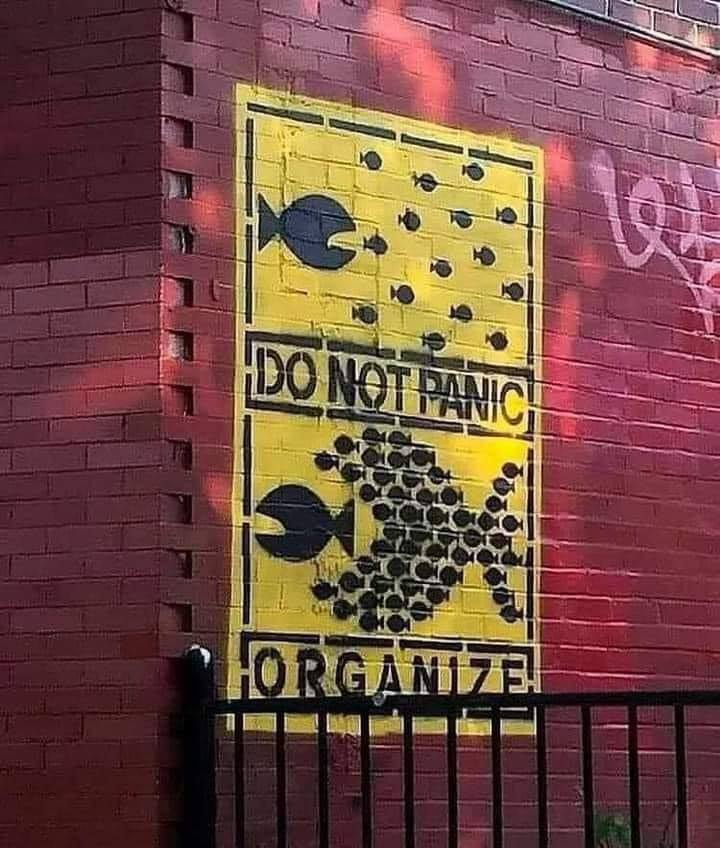The #mainstreaming project is visibly failing. Worse, it is set to catastrophically fail over the next 30 years as #climatechaos escalates. The signs are everywhere: environmental collapse, political instability, and the hollow nature of mainstream culture. Yet, large parts of liberal society continue to bow to the #deathcult, a path of power, greed, and control over life, community, and sustainability. The end result we can now clearly see is the rule of big, dumb, ugly men with guns, a world driven by violence and fear rather than cooperation and creativity.
But we do still have a choice, on the internet we can build and support alternative projects and paths. Instead of kneeling before the #deathcult, we could embrace a #lifecult dedicated to nurturing the #grassroots, growing resilient communities, and reclaiming our collective autonomy. This path is not easy, nor is it comfortable, but it is one of the humane outcomes we can hope for. Am not up for cults my self, but if this is what people won’t let’s make it life rather than death.

The challenge of change, is that this does not emerge from #mainstreaming circles without friction. When alternative movements gain traction, they are both rejected outright and then co-opted and diluted until they become meaningless. The #OMN hashtag story highlights this process, and pushes back the rejection, to balance the struggle, and the slow but real impact on agendas we need.
The question is whether people can engage with this, in the needed #4opens processes. The #4opens is a completely obverse “social” restating of the #FOSS development process, with a crucial addition: #openprocess. Over the last decade, much of this transparency has been lost as activist communities and developers shifted towards encrypted chat for process, locking away vital discussions from needed public discourse.
The weaponization of process, in my experience, whenever we create rigid structures, people inevitably pick them up and start hitting each other with them. This pattern has repeated over decades, killing countless effective grassroots social challenge/change projects. Nearly all of them, in fact. The result? Communities that should be working together end up tearing each other apart over minor ideological differences, procedural disagreements, or personal conflicts. This cycle of infighting and stagnation serves the interests of those in power, it ensures that no real alternative ever gains momentum.
Food for thought is how do we break this cycle? One path is rebuilding the commons, which is currently possible in the digital spaces. Yes, more evaluation than revolution. It’s not about grand theoretical debates or ideological purity, it’s about doing the work by getting involved in your communities. By gather a group together to take practical steps towards #stepaway to move to the #openweb and start rebuilding commons outside the #dotcons.
From a growing network of people and groups doing this, we might get real social change, or we might not. But at least we’ll be doing something practical, rather than simply feeding the current corporate machine.
Seeding the #OMN is a solution to a universal problem, the shit nature of both mainstream/traditional media and the #dotcons that dominate the media landscape. Our lives, economies, and governments are now totally embedded in these corporate-controlled spaces, leaving us little room to manoeuvre. The #OMN offers an alternative, but the biggest barrier is not technology, it’s people’s capture and passivity. Right now, the ONLY thing holding us back is the mass acceptance of despair. The #mainstreaming system breeds apathy. It tells us there’s no alternative, that change is impossible, that resistance is futile. But we know that’s a lie.
The question is: will we act before it’s too late?



